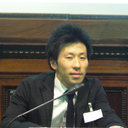Epigenetic augmentation of the macrophage inflammatory protein 2/C-X-C chemokine receptor type 2 axis through histone H3 acetylation in injured peripheral nerves elicits neuropathic pain.
Keywords
Abstract
Although there is growing evidence showing that the involvement of chemokines in the pathogenesis of neuropathic pain is associated with neuroinflammation, the details are unclear. We investigated the C-X-C chemokine ligand type 2 [macrophage inflammatory protein 2 (MIP-2)]/C-X-C chemokine receptor type 2 (CXCR2) axis and epigenetic regulation of these molecules in neuropathic pain after peripheral nerve injury. Expression of MIP-2 and CXCR2 were up-regulated and localized on accumulated neutrophils and macrophages in the injured sciatic nerve (SCN) after partial sciatic nerve ligation (PSL). Perineural injection of MIP-2-neutralizing antibody (anti-MIP-2) or the CXCR2 antagonist N-(2-bromophenyl)-N'-(2-hydroxy-4-nitrophenyl)urea (SB225002) prevented PSL-induced tactile allodynia and thermal hyperalgesia. Perineural injection of recombinant MIP-2 elicited neuropathic pain-like behaviors. Anti-MIP-2 suppressed neutrophil accumulation in the SCN after PSL. Neutrophil depletion by intraperitoneal injection of Ly6G antibody attenuated PSL-induced neuropathic pain. Both anti-MIP-2 and SB225002 suppressed up-regulation of inflammatory cytokines and chemokines in the injured SCN. In addition, acetylation of histone H3 [lysine (Lys9)-acetylated histone H3 (AcK9-H3)] on the promoter region of MIP-2 and CXCR2 was increased in the injured SCN after PSL. Expression of AcK9-H3 was observed in the nuclei of neutrophils and macrophages surrounding the epineurium. Administration of the histone acetyltransferase inhibitor anacardic acid suppressed the up-regulation of MIP-2 and CXCR2 in the SCN after PSL and resulted in the prevention of PSL-induced neuropathic pain. Taken together, these results show that augmentation of the MIP-2/CXCR2 axis by hyperacetylation of histone H3 on the promoter region of MIP-2 and CXCR2 located in the injured peripheral nerve elicits chronic neuroinflammation through neutrophil accumulation, leading to neuropathic pain.


